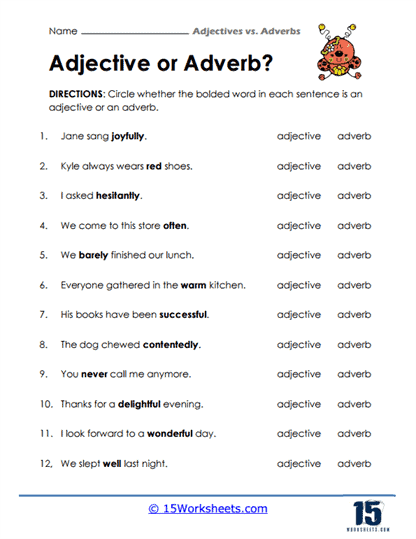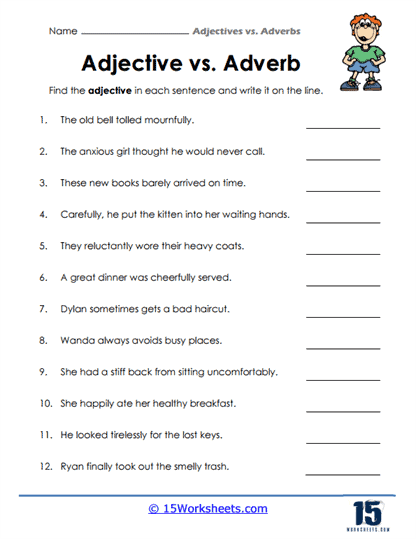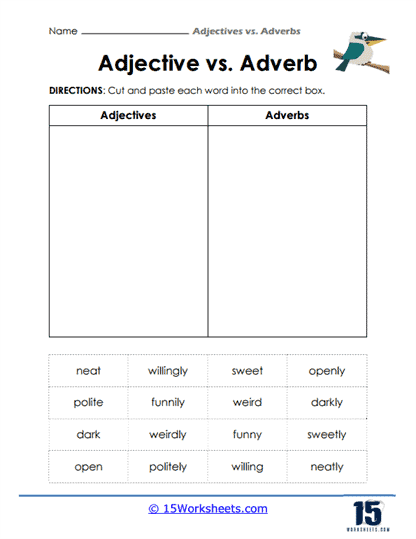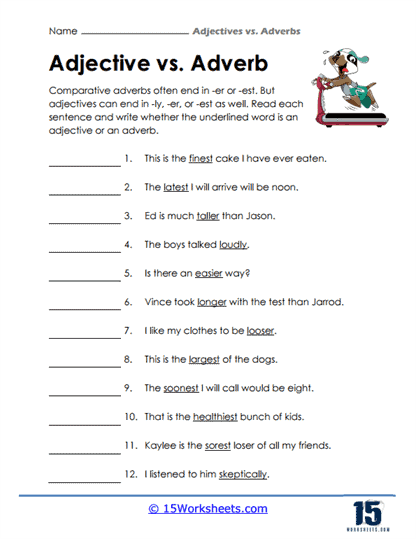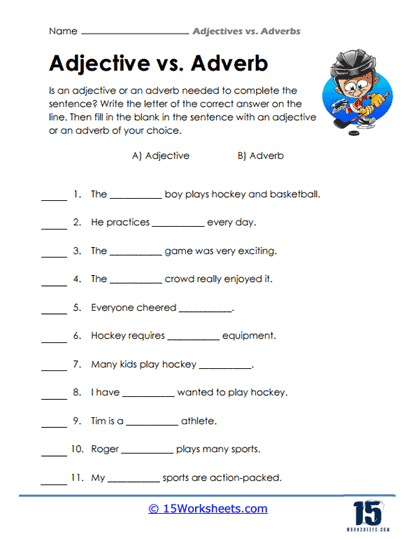Adjectives vs. Adverbs Worksheets
All About These 15 Worksheets
This collection of adjectives vs. adverbs worksheets is a comprehensive and engaging resource designed to help students understand the differences between these two important parts of speech. After completing these worksheets, students will be able to:
- Distinguish adjectives from adverbs;
- Create their own sentences using adjectives and adverbs;
- And understand what adjectives and adverbs are and how they function in a sentence.
Overall, this collection of adjectives vs. adverbs worksheets provides a comprehensive and effective way for students to learn and master the important concepts of adjectives and adverbs. With these resources, students can improve their writing and communication skills, and develop a stronger understanding of the English language.
What are Adjectives and Adverbs?
Adjectives and adverbs are two types of words that are commonly used in the English language to modify or describe other words.
Adjectives are words that are used to describe or modify nouns or pronouns. They provide more information about the qualities, characteristics, or attributes of the noun or pronoun. For example, in the sentence “The blue car is fast“, the word “blue” is an adjective that describes the color of the car, while the word “fast” is an adjective that describes the speed of the car.
Adverbs, on the other hand, are words that are used to modify verbs, adjectives, or other adverbs. They provide more information about how, when, where, or to what extent an action is performed. For example, in the sentence “She sings beautifully“, the word “beautifully” is an adverb that describes how she sings.
In summary, adjectives modify nouns or pronouns, while adverbs modify verbs, adjectives, or other adverbs. Both adjectives and adverbs play important roles in providing details and adding depth to our communication.
How do Adjectives and Adverbs differ from each other?
Adjectives and adverbs are two distinct parts of speech that serve different purposes in sentences. Here are some tips teachers can provide to their students to help them in telling adjectives and adverbs apart from each other:
- Function – Adjectives modify nouns or pronouns, while adverbs modify verbs, adjectives, or other adverbs. If the word in question is modifying a noun or pronoun, it is likely an adjective. If it is modifying a verb, adjective, or another adverb, it is likely an adverb.
- Position – Adjectives typically come before the noun they are modifying, while adverbs can appear in different positions in a sentence. For example, in the sentence “The red ball bounced high”, the word “red” is an adjective that modifies the noun “ball”, while the word “high” is an adverb that modifies the verb “bounced”.
- Form – Some adjectives and adverbs have the same form, but their function in a sentence determines whether they are adjectives or adverbs. For example, in the sentence “She sings loud”, the word “loud” is an adverb that modifies the verb “sings”. In contrast, in the sentence “She has a loud voice”, the word “loud” is an adjective that modifies the noun “voice”.
- Use of Comparative and Superlative Forms – Adjectives have comparative and superlative forms (e.g. “happy, happier, happiest”), while adverbs have comparative and superlative forms that are usually formed by adding “-er” or “-est” (e.g. “quick, quicker, quickest”). Although comparative adverbs often end in -er or -est, adjectives can end in -ly, -er, or -est as well. It is important to understand how the word functions in the sentence and what it modifies to determine whether it is an adjective or an adverb.
In summary, understanding the function, position, form, and use of comparative and superlative forms of words can help in distinguishing adjectives from adverbs.










